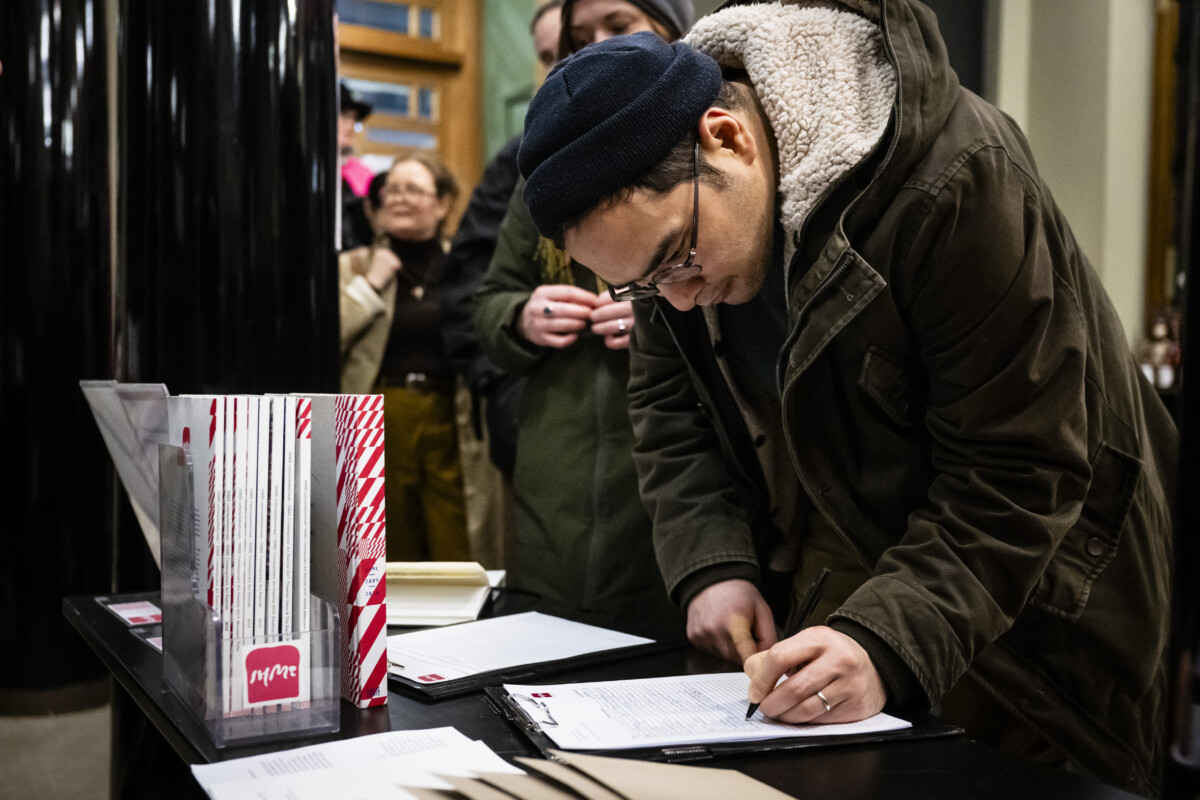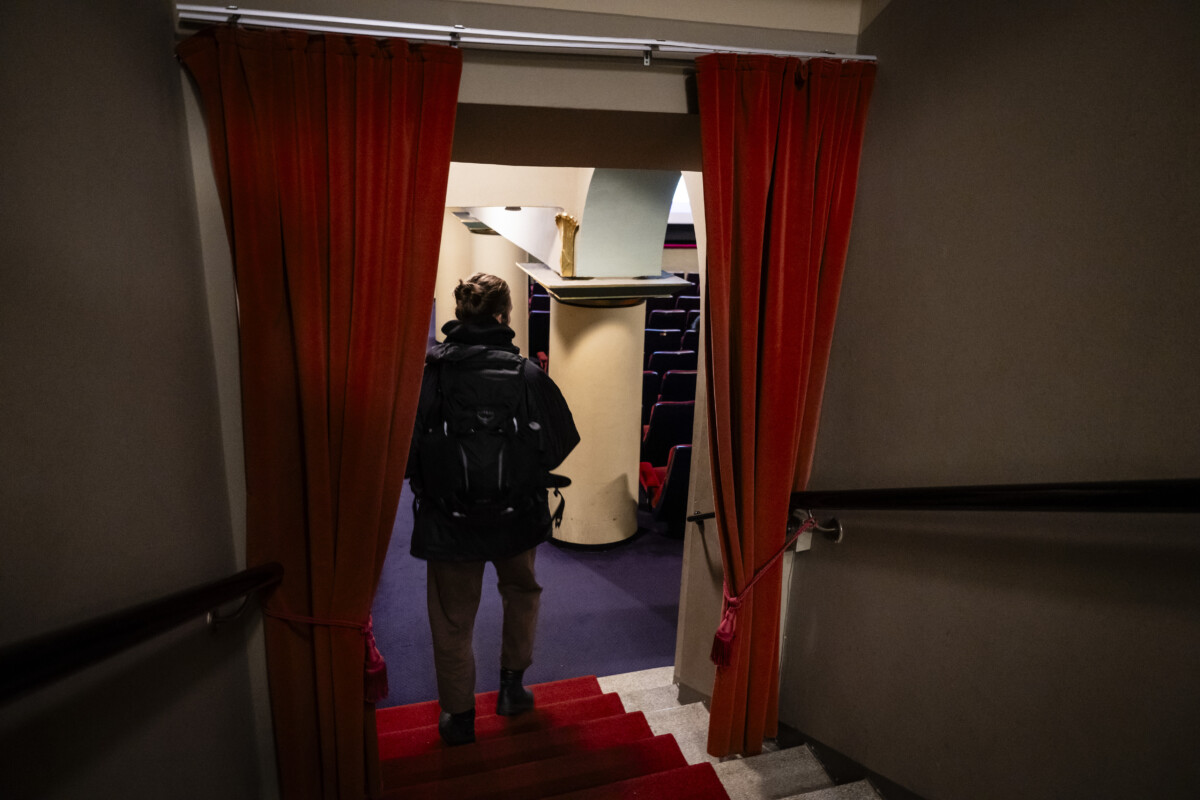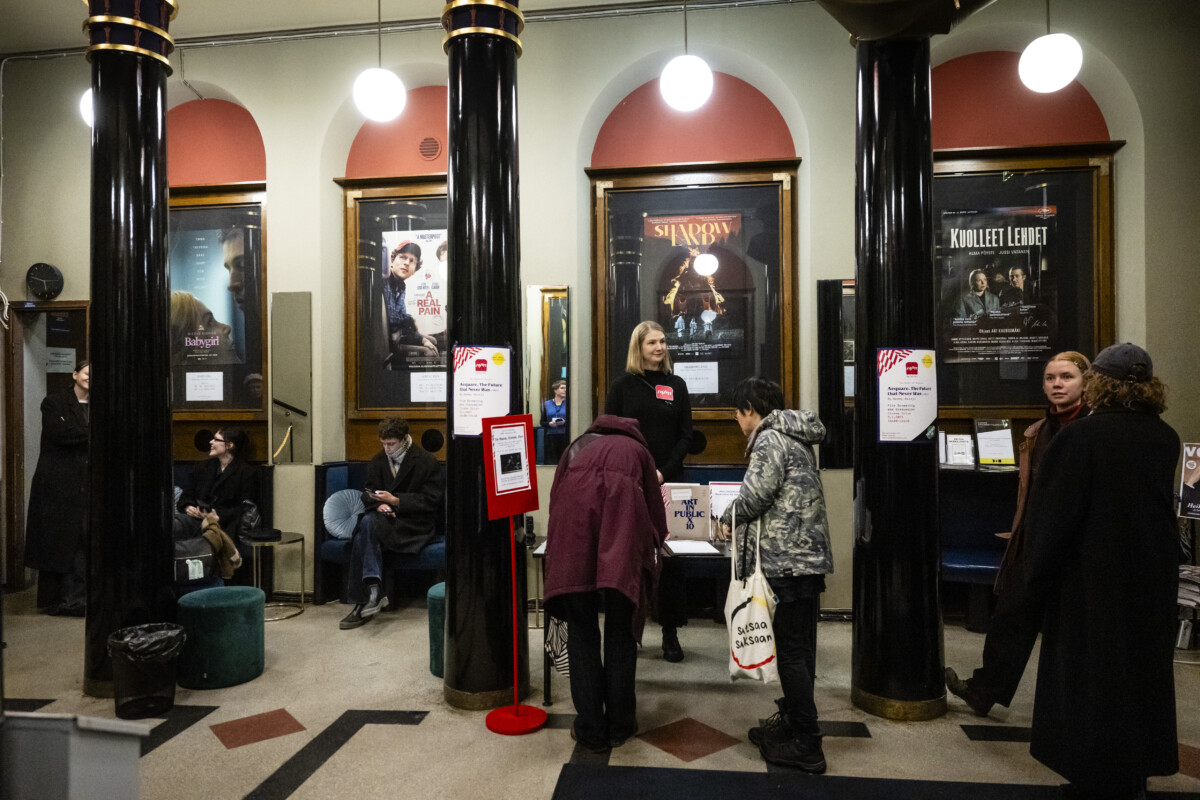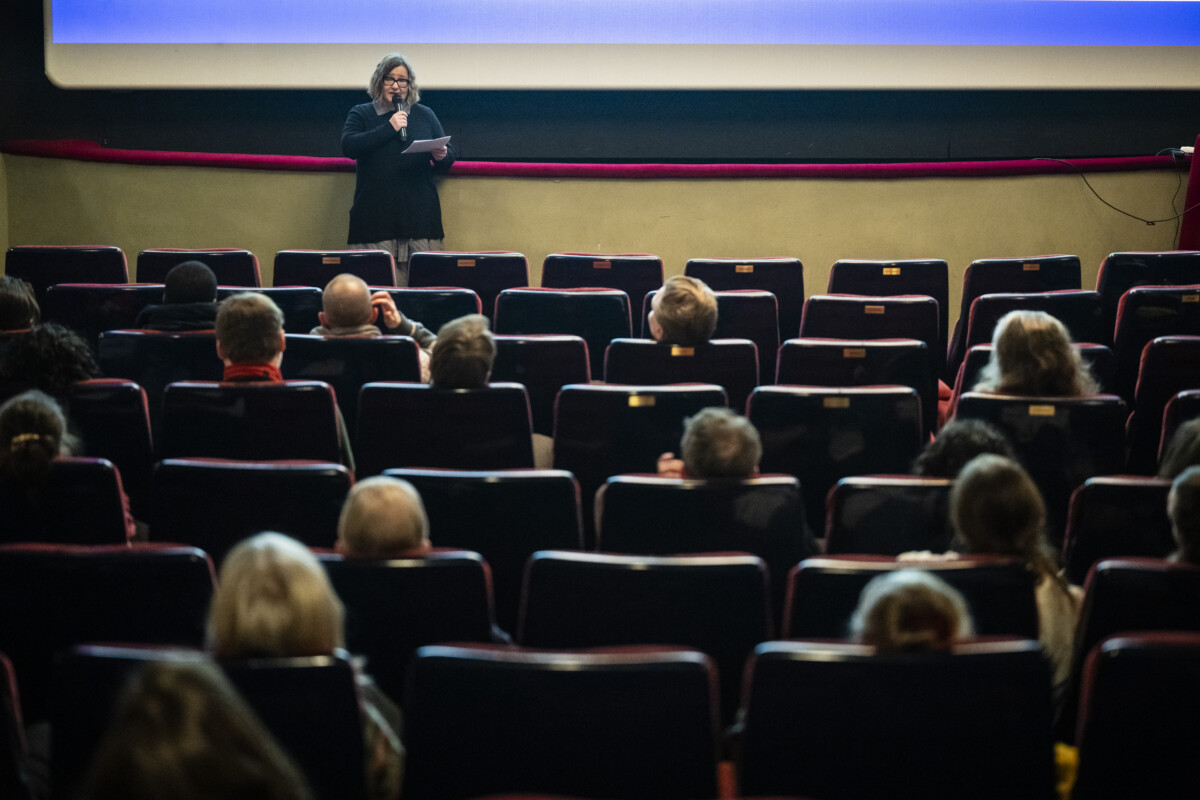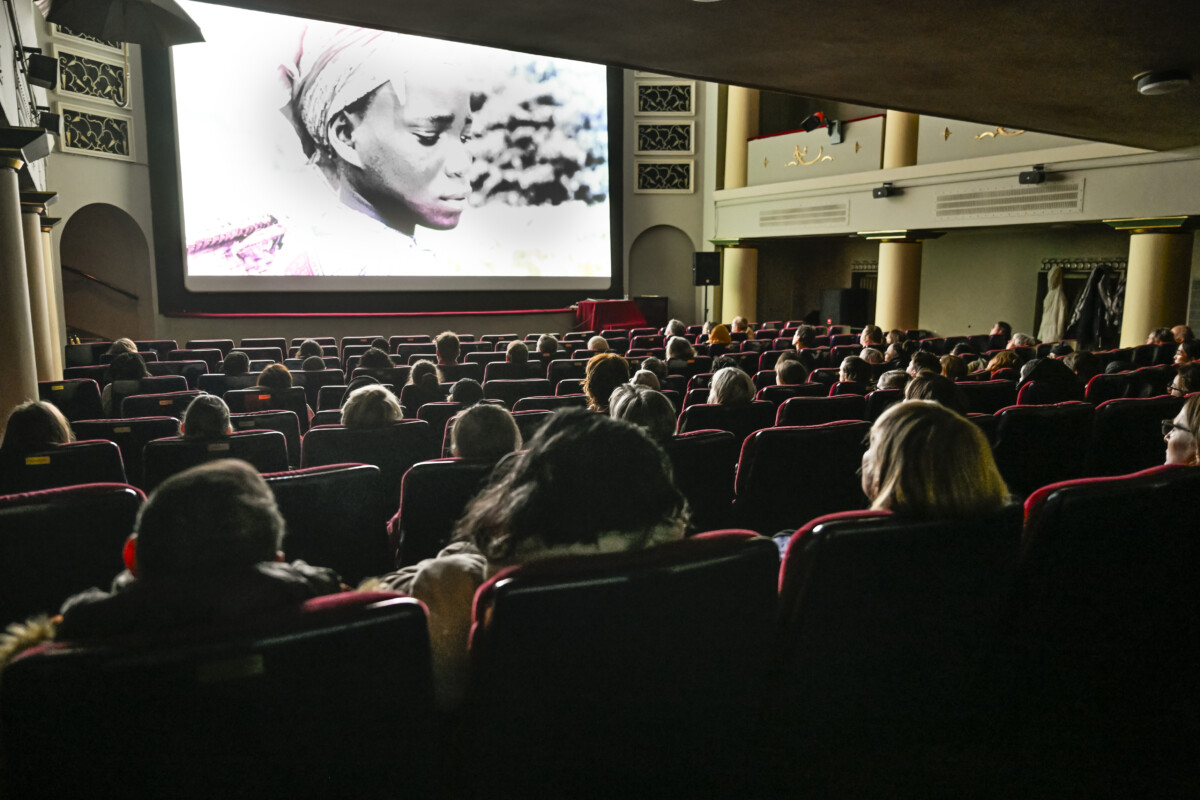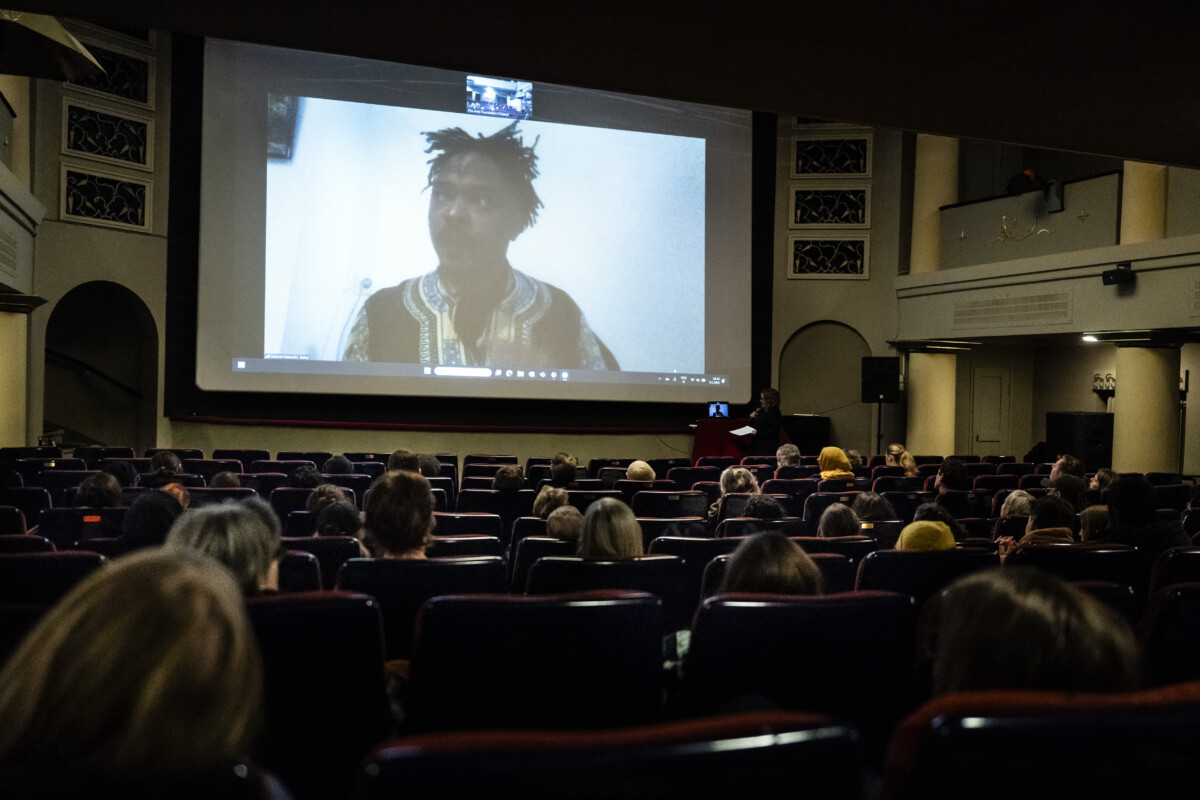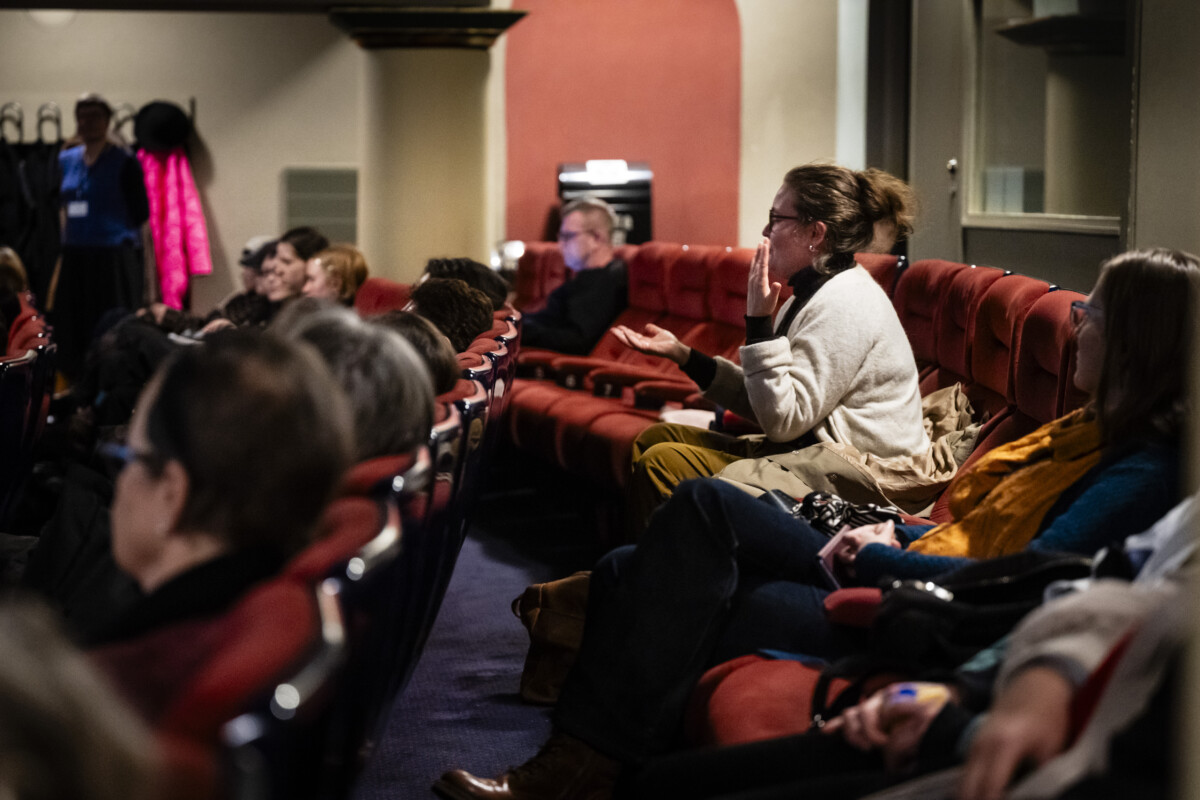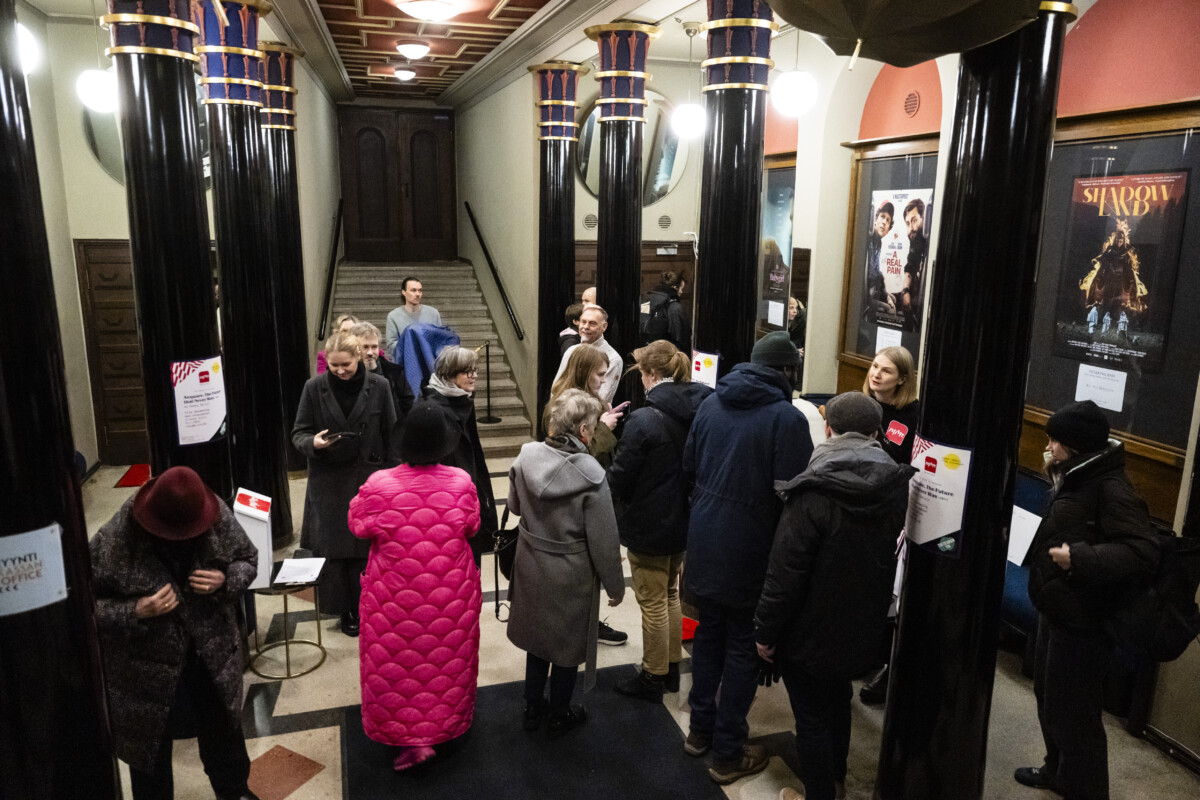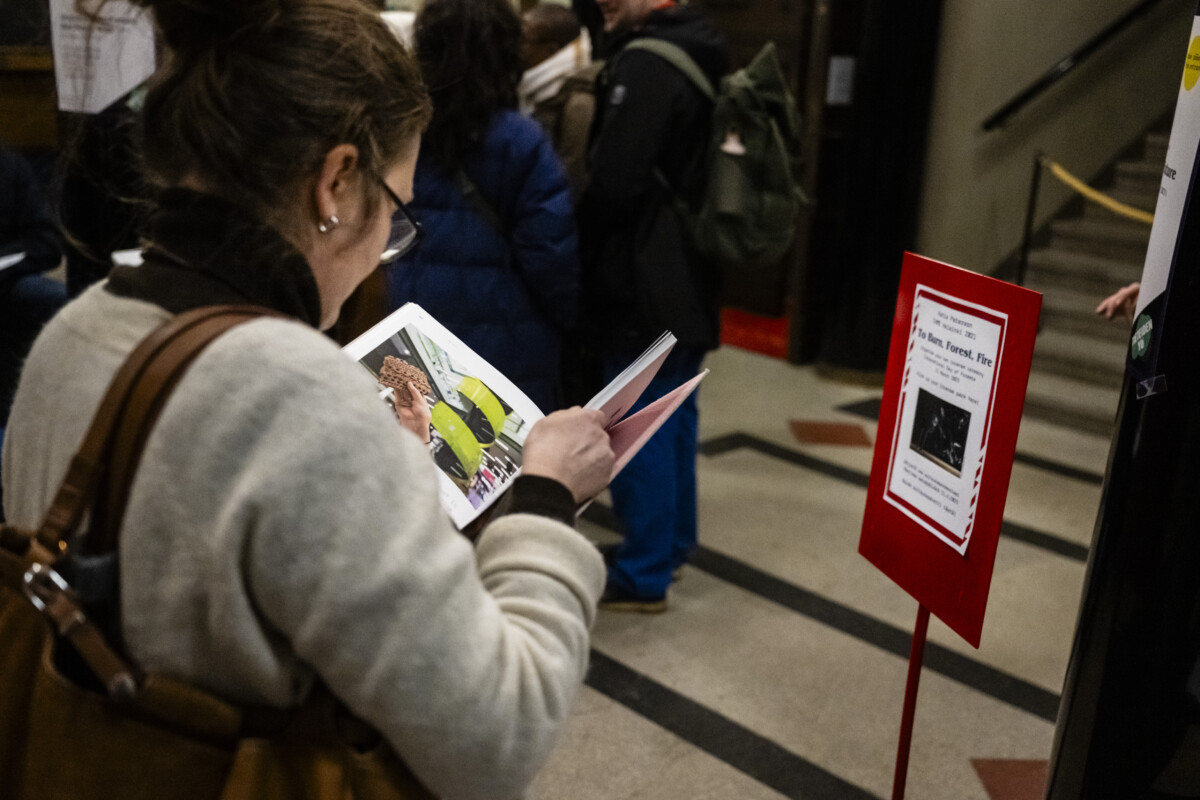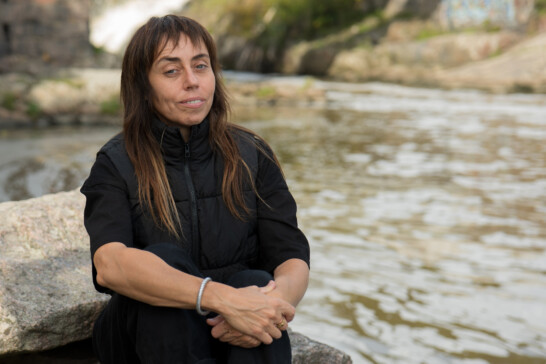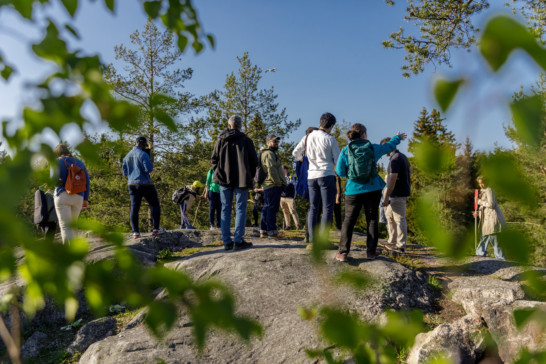News
IHME Helsinki at the Night of Science 2025
Colonialism and Rain Forests
IHME Helsinki took part in the Night of Science for the fifth time on 9 January 2025. This annual urban event highlighting science and research has become an important way for us to engage with different audiences and to stimulate discussion between artists, scientists and the public about the cultural change needed in the environmental crisis.
We screened the film Aequare. The Future That Never Was (2023) by Belgian-Congolese artist Sammy Baloji at Helsinki’s Cinema Orion and discussed it remotely with the artist. The film, which premiered at Venice Architecture Biennale 2023, is set in the second-largest rainforest on Earth, the Yangambi region in the Democratic Republic of Congo, where an institute for agricultural development and research was built during the Belgian colonial period.
How does history affect the present?
In the film, Baloji combines colonial propaganda videos with documentary footage of the present-day surroundings of the Yangambi Agricultural Centre. Videos produced by the former National Institute for Agronomic Study of the Belgian Congo (INEAC) in 1943 and 1957 alternate with Baloji’s footage to show the environmental devastation left by colonialism.
Images of the Institute’s past and present are interspersed with spoken words from propaganda videos and the sounds of nature. Viewers are given a lot of room and freedom to form their own impressions of the impact of the Institute on the people and environment of Congo.
The film was screened twice during the evening, with the remote discussion with the artist between screenings. During this, Baloji talked about the geographical and geopolitical significance of the place he chose to film. Choosing the rainforest was important for him as it plays an important role as a life-sustaining system, both as a carbon sink and as an expression of biodiversity.
The research institute was built in the middle of the forest and land was cleared for agriculture. INEAC collected climate data from 1933 to 1962 and its successor, INERA (Institut National pour l’Étude et la Recherche Agronomiques), continues to do this.
Baloji chose this subject because of what he had heard, even though he had never been there himself. He asked a local cameraman to do the filming. It was important to him that present-day Yangambi was documented by someone who belonged to the community, someone who could film daily life as it appears to the people who live there.
The audience was also interested in the filming process: How did Baloji feel about dealing with someone else’s footage and did he give them instructions? Baloji said he told the cinematographer what type of material he was interested in, but otherwise relied on this local person’s insights. The filming was done during the Covid-19 pandemic, which also limited Baloji’s own ability to travel to the location.
Space installation in a cinema
It was important for Baloji to bring nature into the film, including its sounds. The video’s soundworld mixes the authentic soundtrack of a colonial propaganda film with the noises made by animals, especially birds, and trees being felled. Taken together, the sounds of nature transcend everything else. The film is thus a space installation in a cinema. Baloji collaborated with musician, sound artist and skilled field recordist Chris Watson, to create the soundworld.
The audience was interested in where Baloji got his inspiration. His background is in photography and his sources of inspiration in documentary photography and film derived from African documentary films. Aequare. The Future That Never Was is part of the longer film The Tree of Authenticity (L’arbre de l’authenticité), which will premiere at the Rotterdam Film Festival in February 2025.
Altogether, more than a hundred people attended the evening’s two screenings. Audience feedback showed the film had evoked a variety of emotions and thoughts about colonialism and its consequences, as well as a curiosity to learn more. For many people, seeing the film had reinforced their views on the harmful effects of colonialism, the denial of them, and people’s blindness to them.
For some, the film had changed their views about what progress means, what we are prepared to do for it, and at what cost, and made them reflect on the impact of propaganda in the present day. The film had also broadened their views on the forms of expression used in documentary film.
To Burn, Forest, Fire incense packs given away
At the event, we gave away To Burn, Forest, Fire incense packs from Katie Paterson’s IHME Helsinki Commission 2021. We invite everyone to join in the International Day of Forests, 21 March 2025, by holding their own ceremony. The piece consists of two incense burners aimed at recreating the smell of the first forest on our planet and the last forest of the climate crisis. Here, the first forest is situated in New York state, in what is now Cairo, 385 million years ago. The last forest is the Amazon Rainforest, which is being exploited by the global market economy.
On the International Day of Forests, the ceremony will let people arrange a meditative moment in honour of the forest, with their own group, in a place of their choice. There are 40 packages left to be distributed. If you would like an incense pack for yourself, you can still order one by filling in the form by 15 February 2025. We will mail the packages by the end of February.

